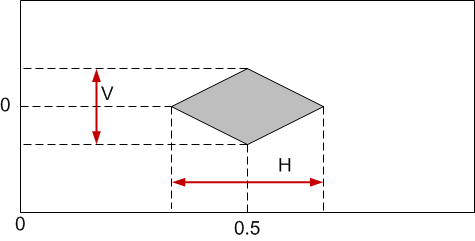SLASE75D August 2015 – September 2017 TMDS181
PRODUCTION DATA.
- 1 Features
- 2 Applications
- 3 Description
- 4 Revision History
- 5 Pin Configuration and Functions
-
6 Specifications
- 6.1 Absolute Maximum Ratings
- 6.2 ESD Ratings
- 6.3 Recommended Operating Conditions
- 6.4 Thermal Information
- 6.5 Power Supply Electrical Characteristics
- 6.6 TMDS Differential Input Electrical Characteristics
- 6.7 TMDS Differential Output Electrical Characteristics
- 6.8 DDC, I2C, HPD, and ARC Electrical Characteristics
- 6.9 Power-Up and Operation Timing Requirements
- 6.10 TMDS Switching Characteristics
- 6.11 HPD Switching Characteristics
- 6.12 DDC and I2C Switching Characteristics
- 6.13 Typical Characteristics
- 7 Parameter Measurement Information
-
8 Detailed Description
- 8.1 Overview
- 8.2 Functional Block Diagram
- 8.3
Feature Description
- 8.3.1 Reset Implementation
- 8.3.2 Operation Timing
- 8.3.3 Swap and Polarity Working
- 8.3.4 TMDS Inputs
- 8.3.5 TMDS Inputs Debug Tools
- 8.3.6 Receiver Equalizer
- 8.3.7 Input Signal Detect Block
- 8.3.8 Audio Return Channel
- 8.3.9 Transmitter Impedance Control
- 8.3.10 TMDS Outputs
- 8.3.11 Pre-Emphasis/De-Emphasis
- 8.4 Device Functional Modes
- 8.5 Register Maps
- 9 Application and Implementation
- 10Power Supply Recommendations
- 11Layout
- 12Device and Documentation Support
- 13Mechanical, Packaging, and Orderable Information
7 Parameter Measurement Information
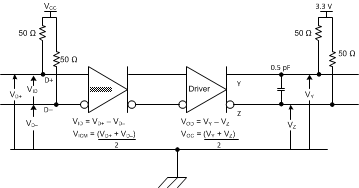 Figure 6. TMDS Main Link Test Circuit
Figure 6. TMDS Main Link Test Circuit
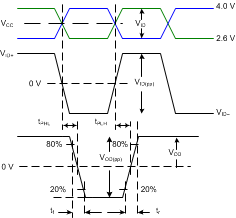 Figure 7. Input/Output Timing Measurements
Figure 7. Input/Output Timing Measurements
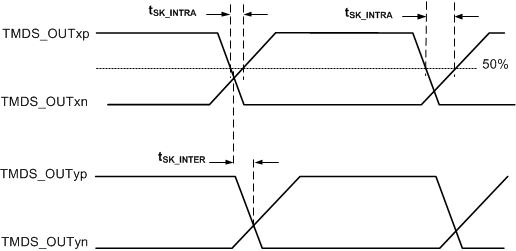 Figure 8. TMDS Output Skew Measurements
Figure 8. TMDS Output Skew Measurements
 Figure 9. HDMI/DVI TMDS Output Common Mode Measurement
Figure 9. HDMI/DVI TMDS Output Common Mode Measurement
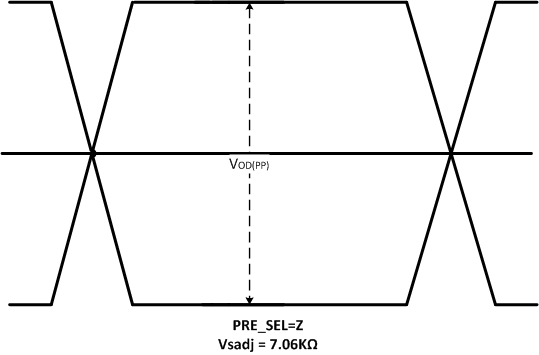 Figure 10. Output Differential Waveform
Figure 10. Output Differential Waveform
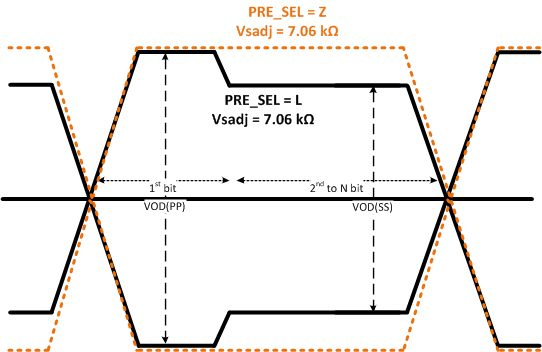 Figure 11. Output De-Emphasis Waveform
Figure 11. Output De-Emphasis Waveform
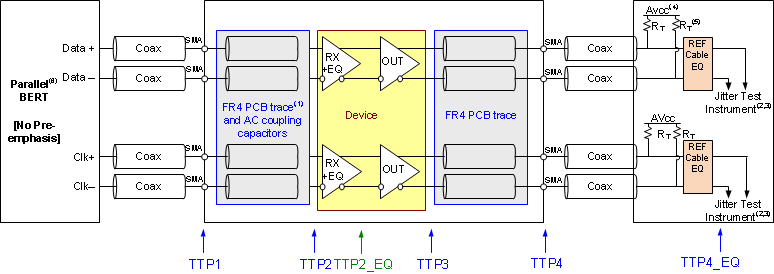
A. The FR4 trace between TTP1 and TTP2 is designed to emulate 1 to 8 inches of FR4, AC coupling capacitor, connector, and another 1 to 8 inches of FR4. Trace width = 4 mils. 100-Ω differential impedance.
B. All jitter is measured at a BER of 10-9
C. Residual jitter reflects the total jitter measured at TTP4 minus the jitter measured at TTP1
D. AVCC = 3.3 V
E. RT = 50 Ω,
F. The input signal from parallel Bert does not have any pre-emphasis. Refer to Recommended Operating Conditions.
Figure 12. HDMI Output Jitter Measurement
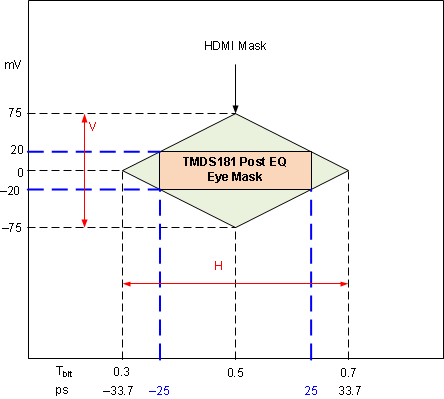 Figure 13. Input Eye Mask Post EQ – TTP2_EQ
Figure 13. Input Eye Mask Post EQ – TTP2_EQ
Table 1. Output Eye Mask V and H Values
| TMDS Data Rate (Gbps) | H (Tbit) | V (mV) |
|---|---|---|
| 3.4 < DR < 3.712 | 0.6 | 335 |
| 3.712 < DR < 5.94 | –0.0332Rbit2 +0.2312 Rbit + 0.1998 | –19.66Rbit2 + 106.74Rbit + 209.58 |
| 5.94 ≤ DR ≤ 6.0 | 0.4 | 150 |
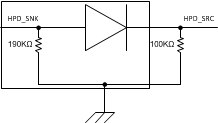 Figure 15. HPD Test Circuit
Figure 15. HPD Test Circuit
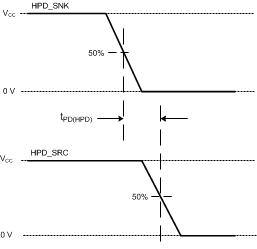 Figure 16. HPD Timing Diagram 1
Figure 16. HPD Timing Diagram 1
 Figure 17. HPD Logic Disconnect Timeout
Figure 17. HPD Logic Disconnect Timeout
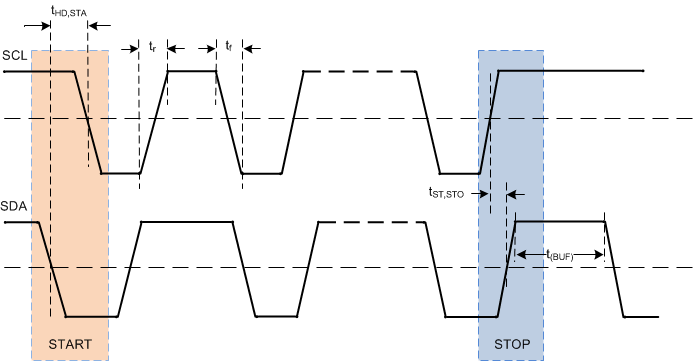 Figure 18. START and STOP Condition Timing
Figure 18. START and STOP Condition Timing
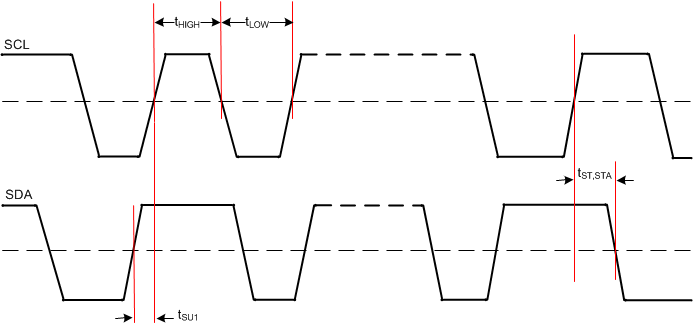 Figure 19. SCL and SDA Timing
Figure 19. SCL and SDA Timing
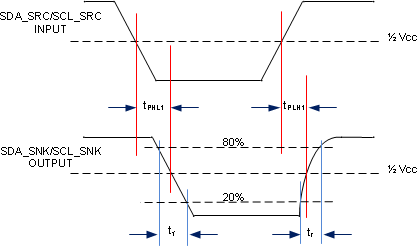 Figure 20. DDC Propagation Delay – Source to Sink
Figure 20. DDC Propagation Delay – Source to Sink
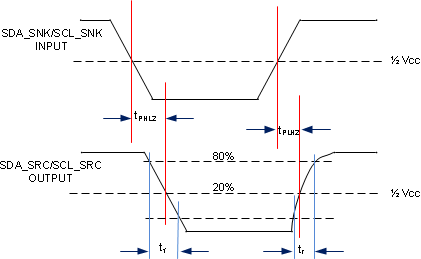 Figure 21. DDC Propagation Delay – Sink to Source
Figure 21. DDC Propagation Delay – Sink to Source
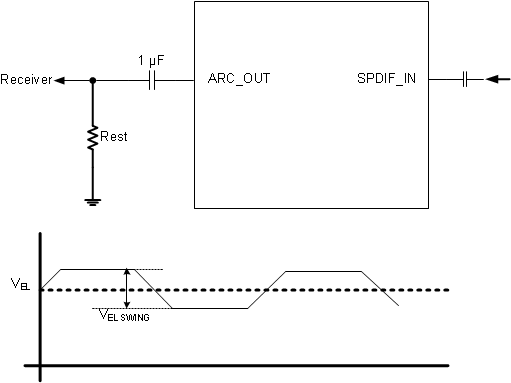 Figure 22. ARC Output
Figure 22. ARC Output
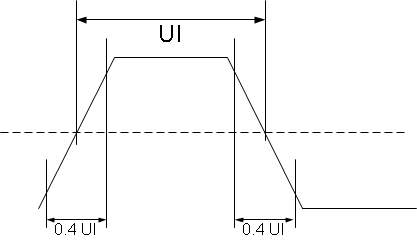 Figure 23. Rise and Fall Time of ARC
Figure 23. Rise and Fall Time of ARC
